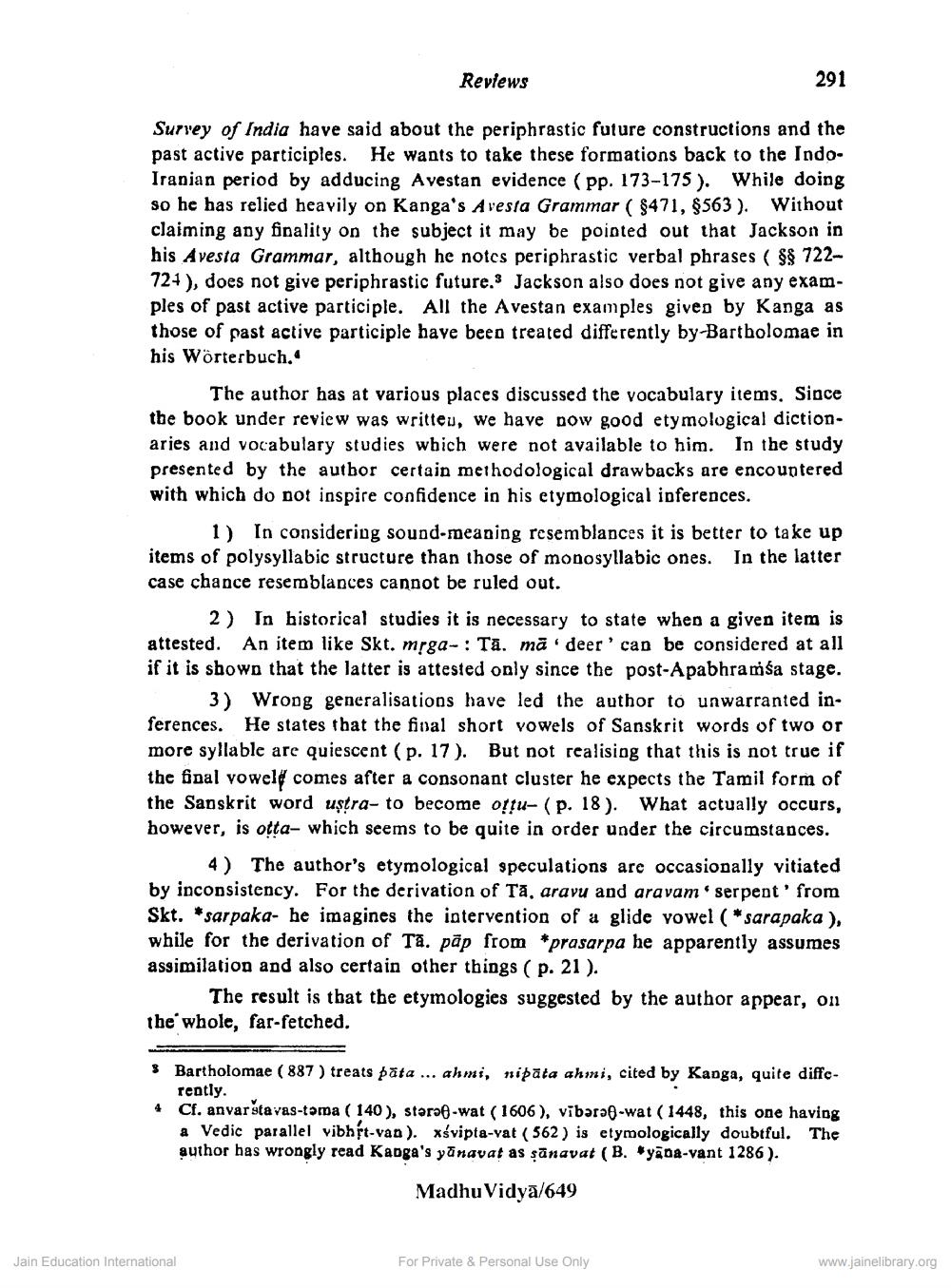________________
Reviews
291
Survey of India have said about the periphrastic future constructions and the past active participles. He wants to take these formations back to the IndoIranian period by adducing Avestan evidence (pp. 173-175). While doing so he has relied heavily on Kanga's Avesta Grammar ( $471, 8563 ). Without claiming any finality on the subject it may be pointed out that Jackson in his Avesta Grammar, although he notcs periphrastic verbal phrases ( $8 722721), does not give periphrastic future. Jackson also does not give any examples of past active participle. All the Avestan examples given by Kanga as those of past active participle have been treated differently by Bartholomae in his Wörterbuch.
The author has at various places discussed the vocabulary items. Since the book under review was writteu, we have now good etymological dictionaries and vocabulary studies which were not available to him. In the study presented by the author certain methodological drawbacks are encountered with which do not inspire confidence in his etymological inferences.
1) In considering sound-meaning resemblances it is better to take up items of polysyllabic structure than those of monosyllabic ones. In the latter case chance resemblances cannot be ruled out.
2) In historical studies it is necessary to state when a given item is attested. An item like Skt. mrga-: Tā. mādeer' can be considered at all if it is shown that the latter is attested only since the post-Apabhramśa stage.
3) Wrong generalisations have led the author to unwarranted inferences. He states that the final short vowels of Sanskrit words of two or more syllable are quiescent (p. 17). But not realising that this is not true if the final voweld comes after a consonant cluster he expects the Tamil form of the Sanskrit word uştra- to become oļļu- (p. 18). What actually occurs, however, is otta- which seems to be quite in order under the circumstances.
4) The author's etymological speculations are occasionally vitiated by inconsistency. For the derivation of tā, aravu and aravam.serpent' from Skt. * sarpaka- he imagines the intervention of a glide vowel (*sarapaka ), while for the derivation of Ta. pap from *prasarpa he apparently assumes assimilation and also certain other things (p. 21).
The result is that the etymologies suggested by the author appear, on the whole, far-fetched.
$ Bartholomae ( 887) treats pata ... ahmi, nipata ahmi, cited by Kanga, quite diffc
rently. Cf. anvar stavas-tompa ( 140 ), stara-wat (1606), vibəra -wat (1448, this one having a Vedic parallel vibhft-van). xsvipta-vat (562) is etymologically doubtful. The author has wrongly read Kanga's yānavat as sānavat (B. *yana-vant 1286).
Madhu Vidya/649
Jain Education International
For Private & Personal Use Only
www.jainelibrary.org




